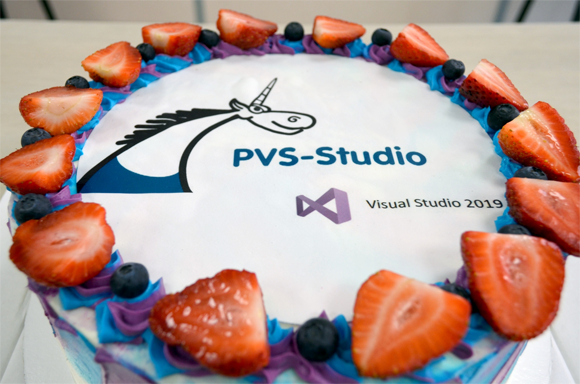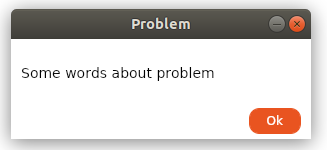Tips and tricks from my Telegram-channel @pythonetc, May 2019

It is a new selection of tips and tricks about Python and programming from my Telegram-channel @pythonetc.
← Previous publications




It’s time to talk about exceptions or, rather, exceptional situations. Before we start, let’s look at the definition. What is an exceptional situation?
This is a situation that makes the execution of current or subsequent code incorrect. I mean different from how it was designed or intended. Such a situation compromises the integrity of an application or its part, e.g. an object. It brings the application into an extraordinary or exceptional state.
But why do we need to define this terminology? Because it will keep us in some boundaries. If we don’t follow the terminology, we can get too far from a designed concept which may result in many ambiguous situations. Let’s see some practical examples:
struct Number
{
public static Number Parse(string source)
{
// ...
if(!parsed)
{
throw new ParsingException();
}
// ...
}
public static bool TryParse(string source, out Number result)
{
// ..
return parsed;
}
}This example seems a little strange, and it is for a reason. I made this code slightly artificial to show the importance of problems appearing in it. First, let’s look at the Parse method. Why should it throw an exception?
var length = array.Length;
for (int i = 0; i < length; i++) {
//do smth
}

February 2019 marked the release of ReactiveUI 9 — the cross-platform framework for building GUI applications on the Microsoft .NET platform. ReactiveUI is a tool for tight integration of reactive extensions with the MVVM design pattern. You could familiarize yourself with the framework via a series of videos or the welcome page of the documentation. The ReactiveUI 9 update includes numerous fixes and improvements, but probably the most crucial and interesting one is integration with the DynamicData framework, allowing you to work with dynamic collections in Reactive fashion. Let’s find out what we can use DynamicData for and how this powerful reactive framework works under the hood!
Across all of Microsoft, we are focusing on empowering developers to build better apps, faster. One way we are accomplishing that is by providing a range of products and services covering all stages of the software development lifecycle. This includes IDEs and DevOps tools, application and data platforms on the cloud, operating systems, Artificial Intelligence and IoT solutions, and more. All of these are centered around developers, both as individuals working in teams and organizations, and as members of developer communities.
GitHub is one of the largest developer communities, and for millions of developers around the world their GitHub identity has become a critical aspect of their digital life. Recognizing that, we’re excited to announce improvements that will help GitHub users get started more easily with our developer services, including Azure DevOps and Azure.




Hi everyone!
I like Tox and respect the participants of this project and their work. In an effort to help Tox developers and users, I looked into the code and noticed potential problems that could lead to a false sense of security. Since I originally published this article in 2016 (in Russian), many improvements have been made to Tox, and I lead a team that re-wrote secure Tox software from scratch using the Rust programming language (check out Tox-rs). I DO recommend using tox in 2019. Let's take a look what actually made us rewrite Tox in Rust.
There is an unhealthy tendency to overestimate the security of E2E systems only on the basis that they are E2E. I will present objective facts supplemented with my own comments for you to draw your own conclusions.
Spoiler: The Tox developers agree with my points and my source code pull request was accepted.

Last week, Microsoft held its Build 2019 conference at the Washington State Convention Center in Seattle. Build is a large event with several thousand people from around the world attending to learn all about the current, newest, and future developer-oriented tech coming from Microsoft.
We had the pleasure of meeting so many of you at our booth and answering all your questions!
 Bangkok, in general, is a strange place to stay. Of course, it is warm there, rather cheap and some might find the cuisine interesting, along with the fact that about half of the world’s population does not need to apply for a visa in advance to get there. However, you still need to get acquainted with the smells, and the city streets are casting cyberpunk scenes more than anything else.
Bangkok, in general, is a strange place to stay. Of course, it is warm there, rather cheap and some might find the cuisine interesting, along with the fact that about half of the world’s population does not need to apply for a visa in advance to get there. However, you still need to get acquainted with the smells, and the city streets are casting cyberpunk scenes more than anything else.
This week I spent coding my very first public pet-app based on Telegram chat bot which acts as a Bitcoin wallet and allows to send and receive tips between Telegram users and other so-called “Lightning Apps”. I assume that you are familiar with Bitcoin & Telegram in general, i’ll try to post short and without deep jump into details. More resources about Bitcoin can be found here and Telegram is simply an instant messenger that allows you to create your custom apps (chat-bots) using their platform.
something like this…
